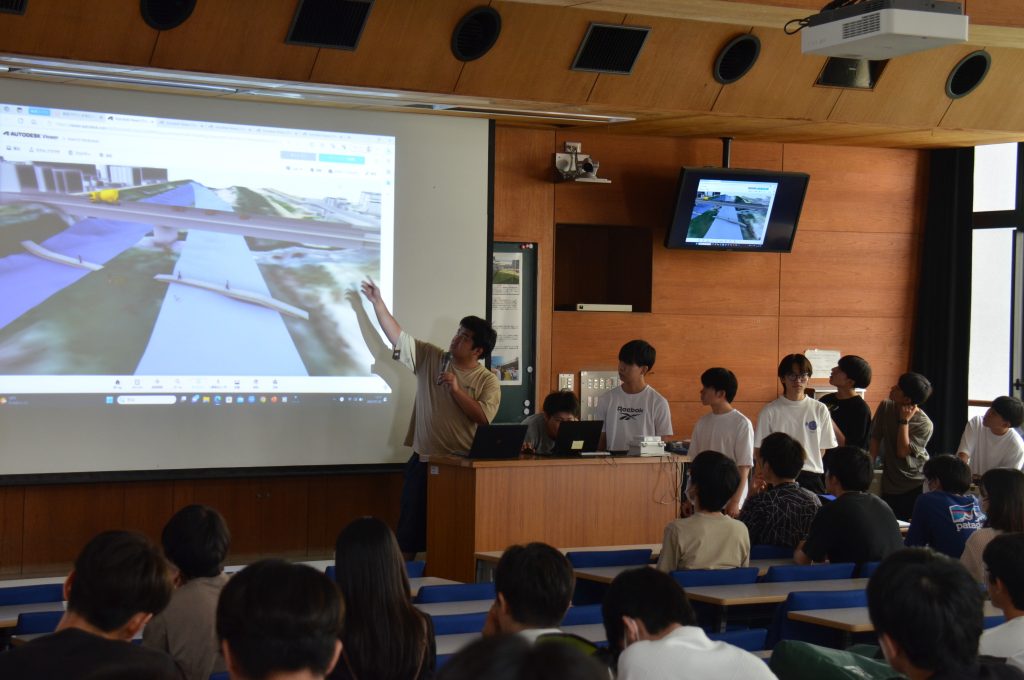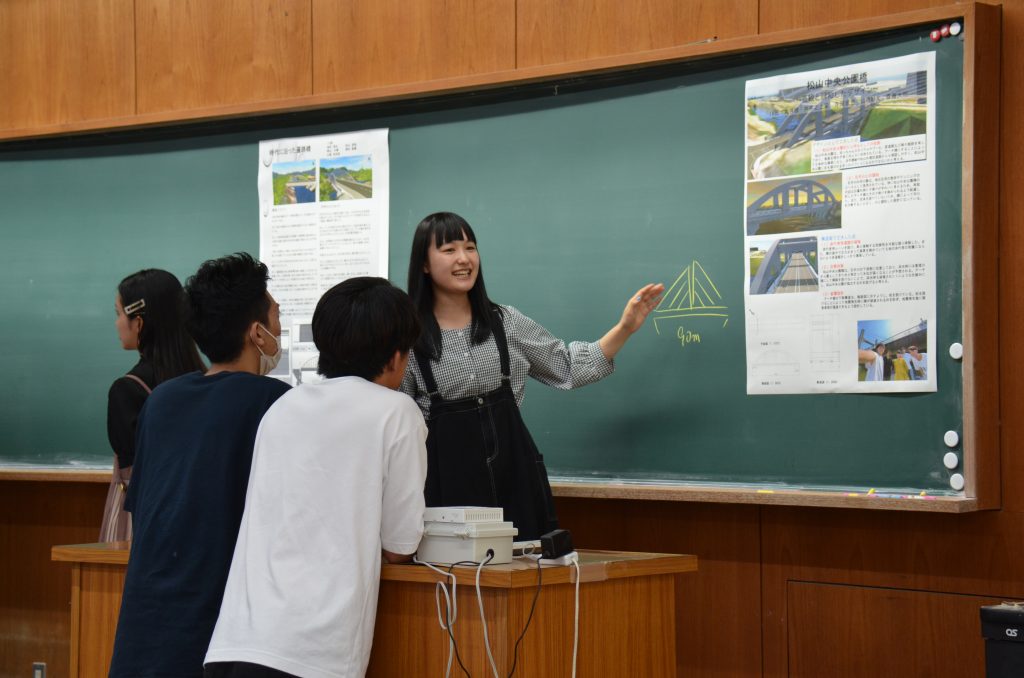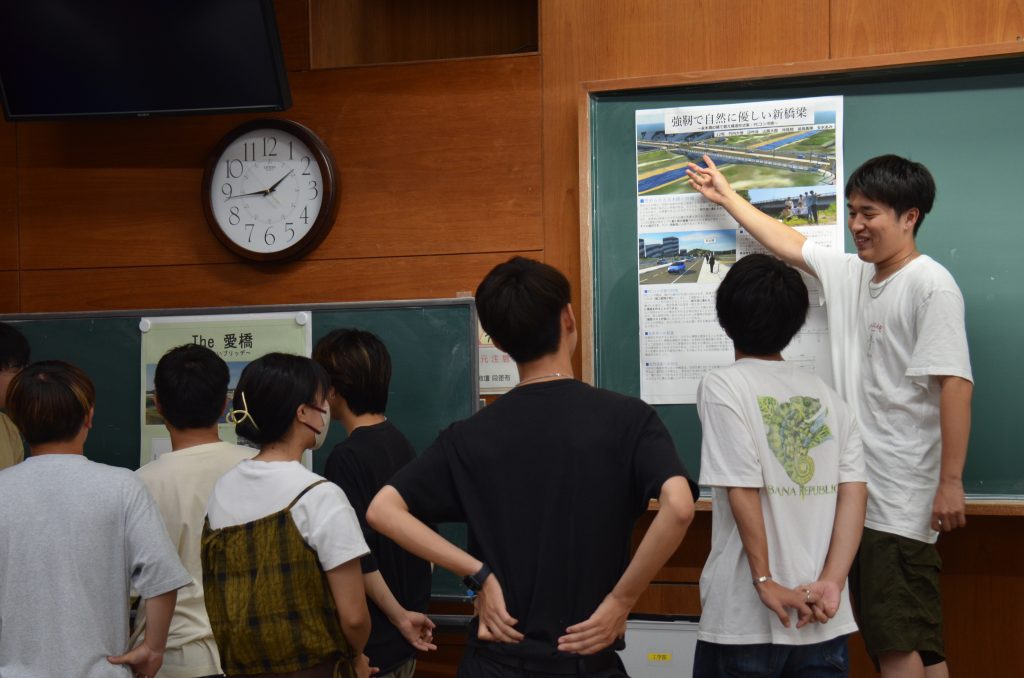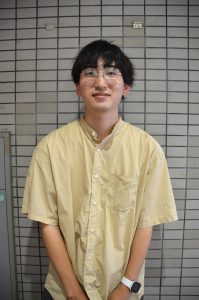This course is one of the Faculty of Engineering’s unique classes in which students learn to create 3D data models, which are essential in the construction of social infrastructure facilities, design bridges using CIM tools*, and evaluate their work in a competition format. The objective of this course is to acquire engineering design skills, an important skill for engineers who are responsible for sustainable infrastructure development.
CIM (Construction Information Modeling): A method of information modeling in the construction industry. In construction projects, information related to the design, construction, and operation of buildings and facilities can be digitized and managed centrally for efficient project management and decision-making.
Lesson Content
This course is offered as a professional education course for third-year students of the Faculty of Engineering, for a total of 15 sessions in the first semester. The day of the interview was the last class of the previous semester, and the final presentation on bridge modeling was held.
The first half of the class consists of presentations by a total of 14 groups of 5 to 6 persons per group, with one presenter and one person in charge of PC operation, each giving a 2-minute explanation of the structure, design, and innovations of the bridge they have devised.
The presentation slides showed the bridges designed by each group from 360 degrees in all directions and at various distances, and were visually presented in a way that was easy to understand.
Particularly impressive was the presentation of a novel idea to create another walkway at a lower level, separate from the bridge walkway, for the purpose of allowing bridge users to enjoy the scenery. He explained that by hanging the walkway over a raised vegetation distribution point in the center of the river, it would provide a place for people to interact with nature. I felt that this kind of flexible and free thinking will be the power to lead to solutions to society’s problems.


During the poster session in the second half of the class, a lively Q&A session was held in each group’s space, and the presenters gave persuasive answers to the questions they received. The competition was graded. The main points of evaluation were whether the students were able to apply their knowledge of construction to bridge design using CIM tools, whether they understood how to operate CIM tool software, whether they were able to design bridges considering the landscape, and whether they were able to propose the most appropriate bridge model for the site.
All groups seemed confident in the bridges they had designed after careful consideration with their peers, taking into account not only the flow of the river but also the natural environment, including weather and ecosystems, by actually visiting the site and surveying the environment surrounding the bridges.


Recently, there have been many natural disasters such as torrential rains. I hope you will do your best to become engineers who are kind to nature and people, and who will play a role in building the foundations of a society in which everyone can live in peace!
Comments from faculty
Work in the civil engineering field cannot proceed without the cooperation of many people, including local governments and local residents, in addition to construction-related companies. Therefore, it is important to have not only the knowledge related to civil engineering but also the ability to accurately and appropriately convey one’s opinions to others in order to proceed with work smoothly.
In the “Bridge Design Competition” lectures, students first learn basic knowledge and techniques for creating 3-D models of civil engineering structures.
Next, each group consisting of several students designs a bridge in 3D, and finally, a poster with drawings of the bridge and design concepts is presented, and the group that proposes the best bridge design idea is selected by a vote of students, TAs, and faculty members.
Many civil engineering structures have been designed in two dimensions, but a three-dimensional design method, which enables a three-dimensional understanding of the structure, is easier for the people involved to understand intuitively and is less likely to lead to design errors, and is expected to improve productivity and quality. The number of projects in which this method has been introduced to construction sites is increasing every year. There are several methods for selecting designers of structures. The design consultation (competition) method, which is also used in this lecture, is a method in which the best proposal is selected from among the design proposals submitted by multiple designers. If the proposal is excellent, it may be selected regardless of past performance, and because fairness is maintained, this method is used relatively often for civil engineering structures. In designing bridges, students are asked to think deeply about the meaning of the word “design” and to propose a design proposal that they think is optimal from various perspectives, including mechanical characteristics, harmony with the surrounding landscape, and cost.
We hope that by learning these contents in our lectures, students will develop the qualities that will enable them to become leaders in the field of civil engineering in the future.
Comments from students
Ayumu Shintani, 3rd year student, Faculty of Engineering
 In the bridge design competition, groups design and present their bridges. During the design phase, students will research various bridge types and select a bridge that is appropriate for the site. In the presentation, a poster is created using PowerPoint to explain the concept and structural features of the bridge. We also use 3D modeling software to create an image of what the bridge will look like when it is actually built. 3D modeling software is commonly used in the construction industry these days, and this class is a very valuable experience for students to be able to use such software from their school days. For those who want to work in the construction industry, this course is a great environment to study in.
In the bridge design competition, groups design and present their bridges. During the design phase, students will research various bridge types and select a bridge that is appropriate for the site. In the presentation, a poster is created using PowerPoint to explain the concept and structural features of the bridge. We also use 3D modeling software to create an image of what the bridge will look like when it is actually built. 3D modeling software is commonly used in the construction industry these days, and this class is a very valuable experience for students to be able to use such software from their school days. For those who want to work in the construction industry, this course is a great environment to study in.

